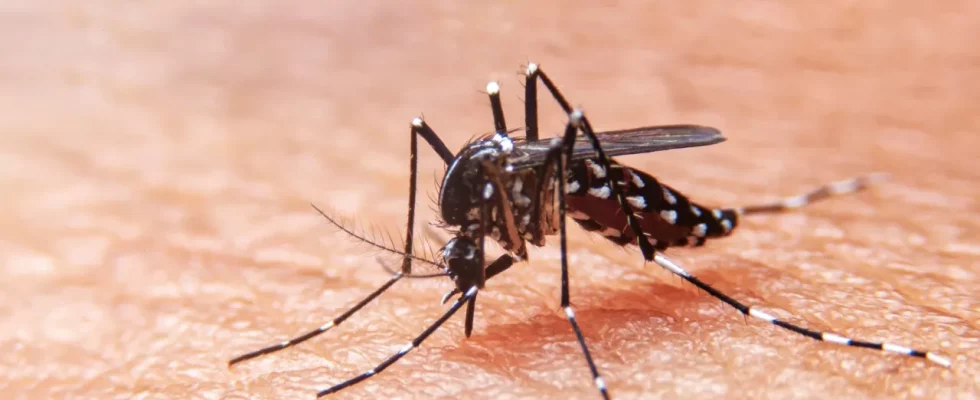The World Health Organization (WHO) warned on May 22 that the global incidence of dengue fever has increased significantly over the past two decades and poses a major public health challenge.
After a slight decline in cases between 2020 and 2022 due to the COVID-19 pandemic and a lower reporting rate A resurgence in dengue cases will be observed worldwide in 2023which was characterized by a significant increase in numbers and the simultaneous occurrence of several outbreaks that spread to regions not previously affected by the disease.
Reported cases of dengue fever increased tenfold worldwide between 2000 and 2019.
Between 2000 and 2019, the agency documented a tenfold increase in reported cases worldwide, from 500,000 to 5.2 million. The year 2019 marked an unprecedented high with 129 reported cases.
More than 5 million cases in over 80 countries by 2023
The Dengue transmission is cyclical and major outbreaks can be expected every three to four yearsthe WHO said in a statement.
The agency noted that during the COVID-19 pandemic, a moderate transmission of dengue in some regions and low transmission in others was observed, leading to an increase in people without immunity to certain serotypes of the dengue virus. The However, data on circulating dengue serotypes are limited.

Since the beginning of 2023, continued transmission coupled with an unexpected increase in case numbers has resulted in a record number of more than five million cases and more than 5,000 dengue-related deaths reported in more than 80 countries and territories. About 80 percent of these cases were reported in the Americas.
Climate change is influencing the increase in cases
Dengue is transmitted through mosquito bites and occurs primarily in urban areas in tropical and subtropical climates. However, global warming is causing cases to appear in areas further and further from the tropics.
“Climate change definitely has an impact because the Higher temperatures create the conditions for the spread of mosquitoes that transmit the disease“, the head of the WHO team, Diana Rojas Álvarez, told the press in Geneva.
The mosquitoes that transmit dengue fever can now survive winters in Europe and South America.
Dengue fever in Latin America
Between January 1, 2023 and December 11, 2023, a total of 4.1 million suspected dengue cases in 42 countries and territories in North and South America, and 15 countries reported an active outbreak.
Although dengue fever is endemic in most countries in South America, Mexico and Central America, as well as the Caribbean, there has been an alarming increase in cases in the second half of 2023. The cumulative annual figure exceeds all previous annual totals and, in some countries, extends beyond historically affected transmission areas, the WHO said.
The agency warned that about 500 million people in the region are currently at risk of contracting dengue fever.
In addition, they demonstrated the simultaneous distribution of all these serotypes in Brazil, Colombia, Costa Rica, Guatemala, Honduras, Mexico, Nicaragua, Panama and Venezuela.
What are the factors that spread dengue fever?
Several factors are associated with an increased risk of the spread of the dengue epidemic, including:
- the changing distribution of vectors, especially in previously dengue-free countries;
- the consequences of the El Niño phenomenon in 2023 and climate change, leading to an increase in temperatures, precipitation and humidity;
- the vulnerability of health systems amid the COVID-19 pandemic;
- the political and financial instability of countries facing complex humanitarian crises;
- high population movements.
These factors also pose a challenge to combating the epidemic and pose the risk of further spread to other countries.
The WHO found that weak surveillance systems existed in many affected countries Delays in reporting and responding and failure to recognize symptoms may have led to the increase in severe dengue cases.

